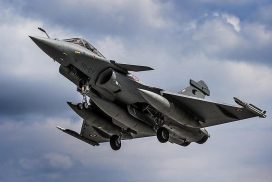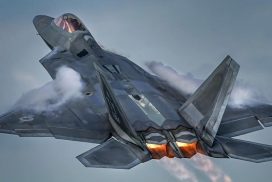In terms of the aircraft, most fighter planes are designed to deal with the effects of positive G and negative G. The F-16 has a positive G limit of 9 and a negative G limit of -3.5. Other aircraft have limits up to 10 G’s and can change direction quite fast while pulling positive G in order to outrun opponents.
But the human body is not so forgiving. For a fighter pilot, excessive and sustained positive G forces can cause loss of consciousness by draining blood away from the brain causing cerebral hypoxia (blood in the body will tend to move from the head toward the feet). This will eventually cause loss of colour vision (greyout), loss of peripheral vision (tunnel vision), complete loss of vision (blackout) and finally loss of consciousness (G-LOC).
G-LOC incidents have caused fatal accidents in high-performance aircraft capable of sustaining high G for extended periods. If G-LOC occurs at low altitude, this momentary lapse can prove fatal and even highly experienced pilots can pull straight to a G-LOC condition without first perceiving the visual onset warnings that would normally be used as a sign to back off from pulling anymore G’s. One might crash during a blackout because of loss of consciousness. That’s the reason in training, pilots fly at high altitudes so that if one did blackout briefly, there was plenty of altitudes to recover.
Training for pilots of high-performance aircraft or spacecraft often includes ground training for G-LOC in specially designed centrifuges, sometimes exposing pilots to 9 Gs for sustained periods. The G thresholds at which these effects occur depend on the training, age and fitness of the individual. Untrained individuals can black out between 4 and 6 G, while a trained, fit individual wearing a G-suit can sustain up to 9 G without going into G-LOC.
The opposite of positive G is negative G, where the blood pressure will increase in the head, running the risk of a dangerous condition known as redout. With too much blood pressure in the head and eyes, symptoms are usually first experienced visually. Skilled pilots use this loss of vision as their indicator that they are at maximum turn performance without losing consciousness. It is the inverse effect of a grey-out (also known as whiteout). Redouts are potentially dangerous and can cause retinal damage and hemorrhagic stroke.
To acquire a redout, one must first be inverted, which is most uncomfortable, to begin with. If not strapped in the seat tightly, the flight controls may be difficult to reach. It is accompanied by extreme discomfort and resultant red eyeballs.
For a fighter pilot, positive G is undesirable and negative G is even more undesirable. Positive G pushes the pilot into his seat, making it hard to reach controls in the cockpit and move the stick precisely. While negative G pushes the pilot into his seatbelt, pushing the stomach into the throat and popping blood vessels in the face and eyes. It can cause bruising, lightheaded and impair the ability to think straight. In terms of a dogfight, you want neither because both blackout and redout imply you are not seeing anything anymore. Both must be avoided.




